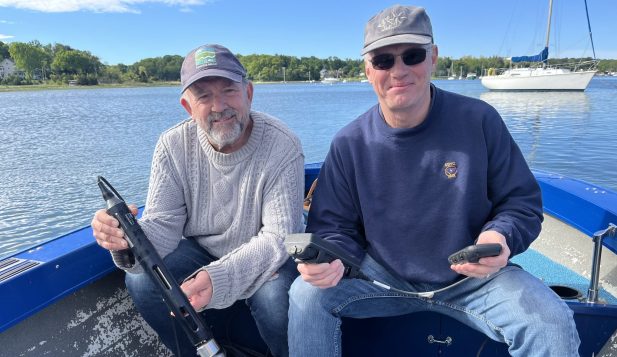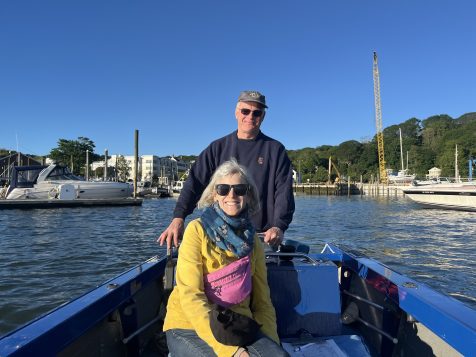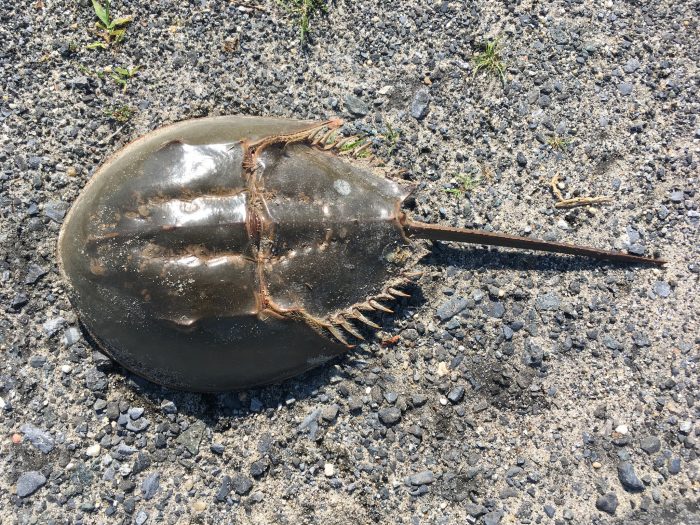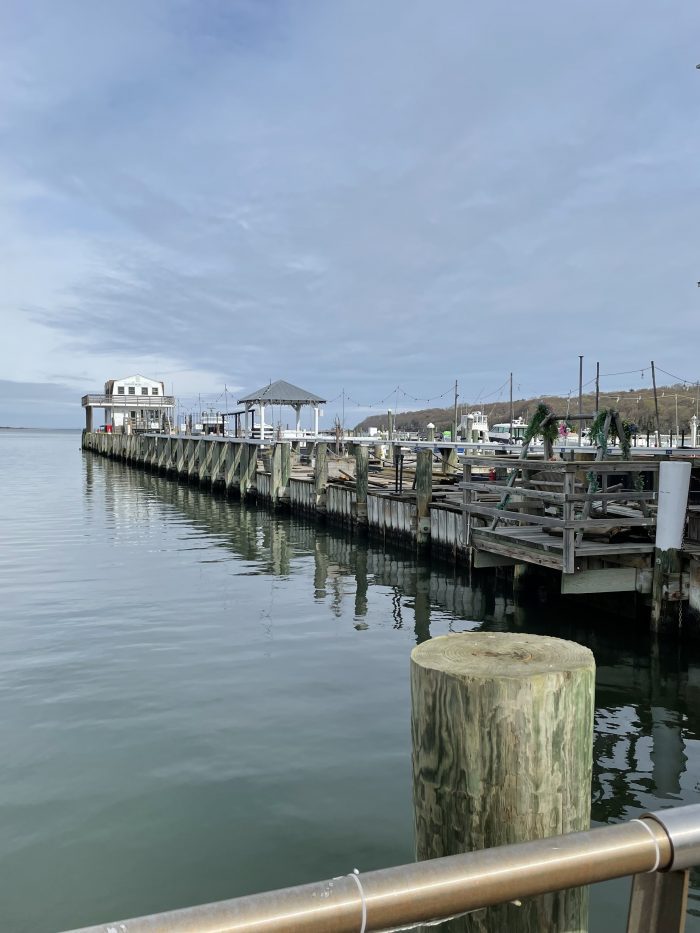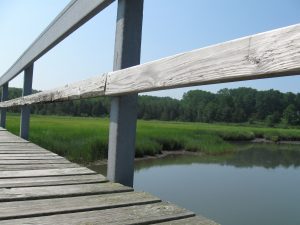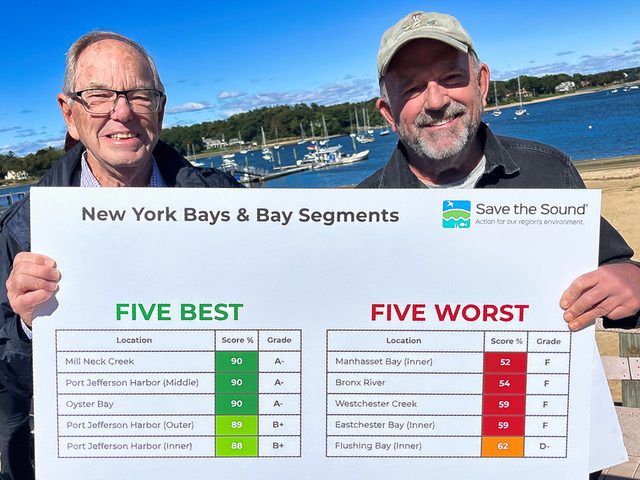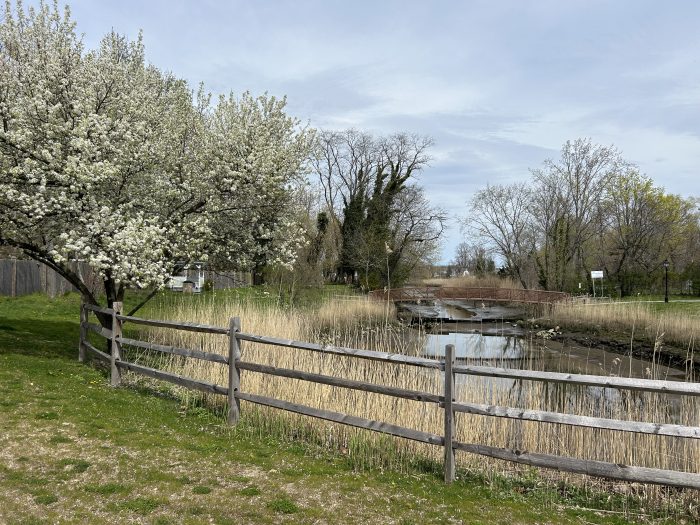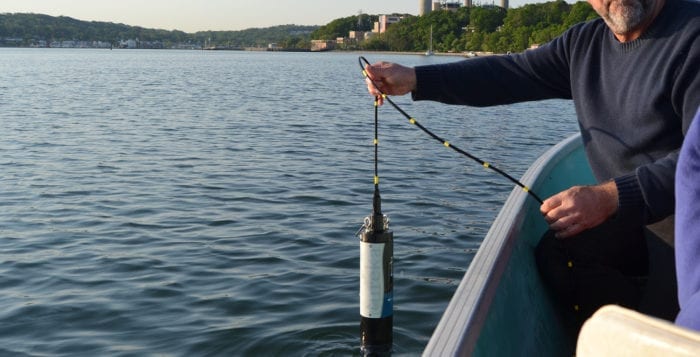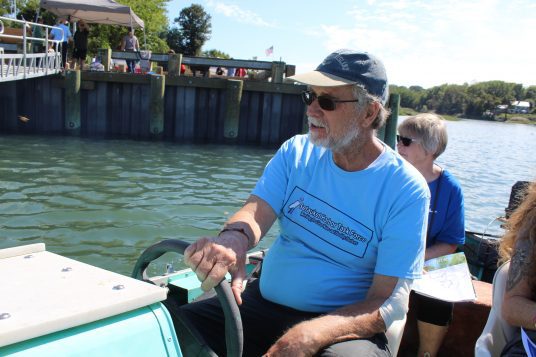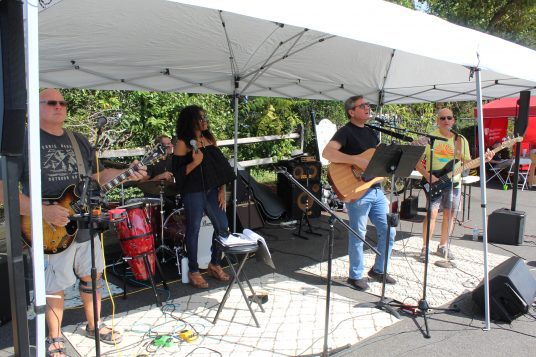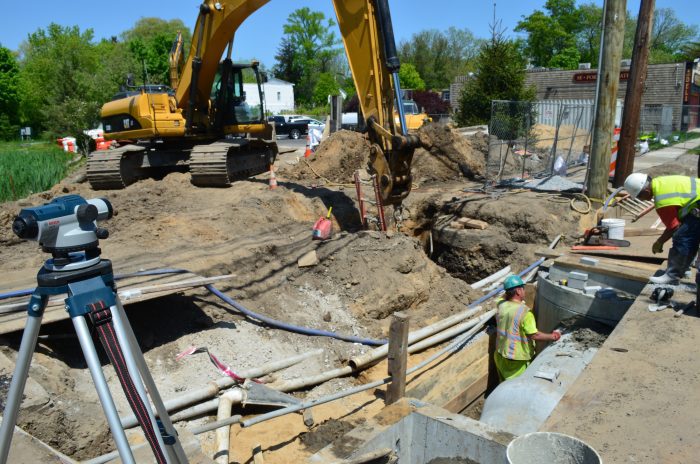By Mallie Jane Kim
New York’s horseshoe crabs may see new and permanent protections, if a bill in Albany is successful — something local environmental groups are rooting for.
“Horseshoe crabs were once abundant in our local harbors and lined the shores of Port Jefferson and Setauket Harbors during the May breeding season,” said George Hoffman, co-founder of the Setauket Harbor Task Force. “They are a big deal with harbor lovers.”
Horseshoe crabs, which are more closely related to arachnids like spiders and scorpions than crustaceans, are considered “living fossils” because they’ve existed, unchanged, for an estimated 450 million years, surviving through multiple mass extinctions.
But the species has faced a steady decline in the past few decades due to harvesting and habitat loss, which in turn affects species of birds that rely on horseshoe crab eggs as mid-migration sustenance. The crabs are commercially harvested for use as bait by eel and conch fishing operations, and their blue blood is used in biomedical research and for improving vaccine safety.
The new bill, introduced by Assemblymember Deborah Glick (D-Manhattan), would amend state law to prohibit the taking of horseshoe crabs for commercial or biomedical purposes from state waters, but would allow for approved scientific or educational uses, like for zoos or aquariums.
The Assembly’s Committee on Environmental Conservation approved the bill on May 14, and it now sits with the codes committee. If the bill passes there, it would face a vote by the whole Assembly.
On May 21, state Sen. Brad Hoylman-Sigal (D-Manhattan) introduced a “same as” bill in the state Senate, and because it counts as a revamped version of a previous horseshoe crab bill that already passed through relevant committees, this bill is ready for a floor vote.
Adrienne Esposito, executive director of the Citizens Campaign for the Environment, warned that because Connecticut and Massachusetts recently enacted stronger protections for horseshoe crabs and neighboring states are also eying changes, New York’s population could be at greater risk.
“We’re very concerned that’s going to draw more eyes on New York’s horseshoe crab population,” she said.
According to New York’s Department of Environmental Conservation, a permit holder can currently harvest up to 200 horseshoe crabs per day in New York. The state has an annual harvest limit of 150,000 each year.
A report by the Atlantic States Marine Fisheries Commission indicated coastwide harvesting of horseshoe crabs for bait peaked in the 1990s at about 2.75 million crabs, but was down to about half a million in 2022, partly due to more efficient equipment that allows fishermen to use much less bait.
Still, Esposito said harvesting horseshoe crabs to chop them up as bait is “archaic,” and said commercial fishing enterprises have been talking about finding alternative bait sources for decades. “This will incentivize finding alternative baits for fishermen to use to successfully catch conch and eel,” she said.
For Hoffman, stopping the “rapacious takings” that have lowered horseshoe crab populations is essential.
“We must do all we can to save them,” Hoffman said. “We can’t let them be hunted to extinction.”

